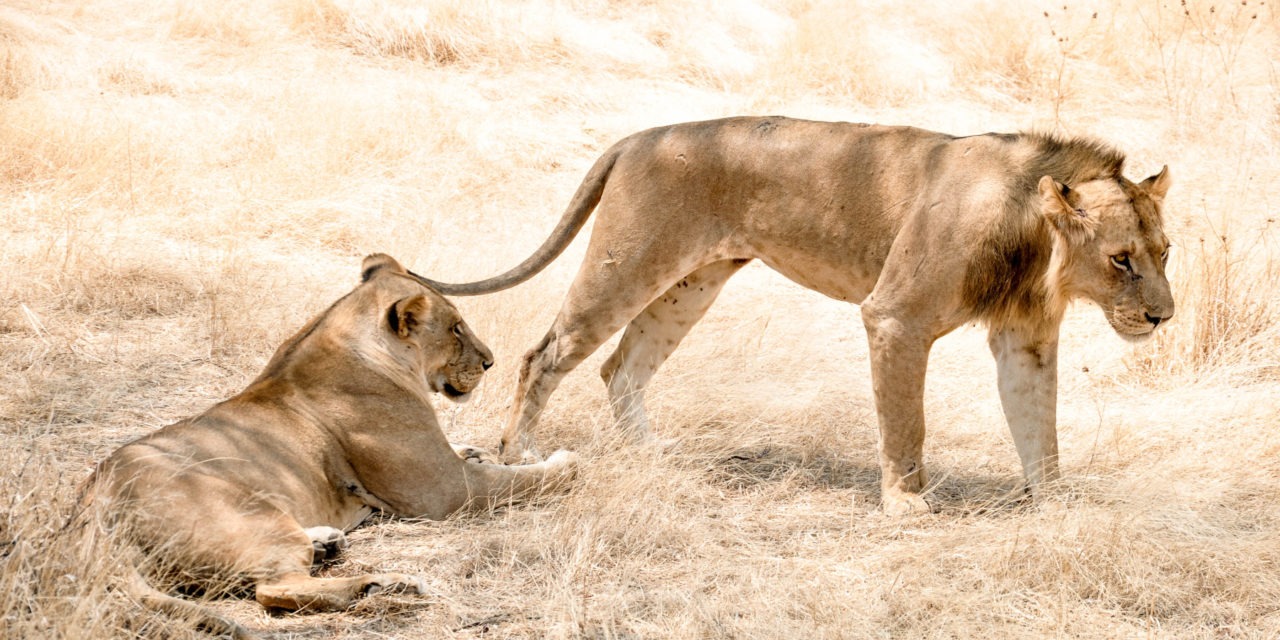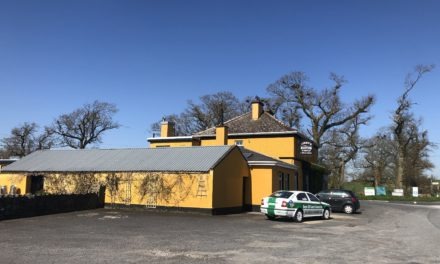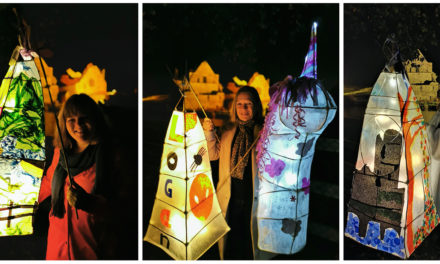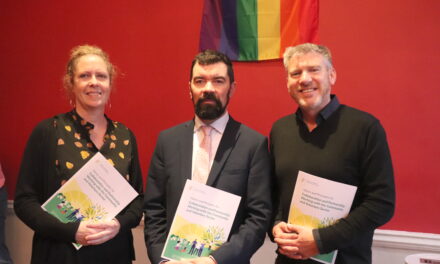We’re all aware of the stresses on people and the environment in Africa. The human population is expanding and wild animal numbers are declining. Reporter Cian Kearns heard about an impressive project in Tanzania that aims to protect both people and nature. He was curious to see for himself. Could the livelihood of farmers and their families be secured, while still protecting lions?
Musse stands, shoulders slumped, beside a tousled gap in a wall of branches.
“Simba dragged the goat through here,” he says, pointing at the boma, a thorny cattle enclosure. We’re surrounded by low, scraggly trees, their branches bare and thirsty for the coming rains.
The goat was pregnant, he adds. It’s a double loss.
Musse believes it’s the same lion who has been preying on other small homesteads in the area. I peer uneasily into the undergrowth around us.
Ruaha Carnivore Project
I am in central Tanzania with my friend and colleague, Ray Foley. We’re here to see how conservation and development are linked in this part of the world.
The search has taken us to the Ruaha Carnivore Project (RCP). It’s not easy to sum up their work in a single sentence. The project is a lot of things: a community development initiative; a conservation effort; even a scientific research station. The challenge for RCP is balancing these essentially different goals.
Traditionally, when a lion killed livestock belonging to the Barabaig (a nomadic pastoral tribe in central Africa), the answer was simple: a hunt was called. Young tribesmen from nearby villages assembled, thin metal-tipped spears in hand. Skilled trackers would note minute details – bent blades of grass, darts of hair hooked on branches – and the lion would be found. Then, with courage bordering on recklessness, it would be attacked and killed.
Yet times are changing for the pastoralists. Their old ways have fallen out of favour. Modern society begins to encroach on their traditional way of life. The old, migratory paths followed for generations through Kenya and Tanzania have narrowed and are closing off. Settled communities press inwards from the coast, bringing agriculture and land control measures.
RCP aims to help the Barabaig adapt by balancing their societal needs with the realities of a country-wide population boom and conservation efforts. As camp manager Benji Casio puts it, “while the main goal of Ruaha Carnivore Project is to address the problem of human-wildlife conflict, we have several other goals”.
One of these goals is to gather information on big cat depredations. And it’s this that has brought us to Musse’s boma. In spite of the lion attack, there will be no hunt today. Musse is a lion defender (LD), part of the flagship programme run by RCP.

Musse stands in front of his predator-proof cattle enclosure, subsidised by Ruaha Carnivore Project. Photo: Ray Foley.
Lion defenders and cultural considerations
In each village where the organisation works, they identify the most experienced and respected hunter and ask him to become an LD. It is a coveted position. The former hunters are paid a salary to prevent hunts and help carry out research. Benji estimates that LDs stop as many as five to 10 hunts a month, although this often puts them in direct conflict with their tribal elders.
The problem is that, although strictly illegal, hunting lions carries strong cultural significance for the tribe. A warrior’s prowess on a hunt confers status and even marriage rights.
It is hard to kill a lion. The first spear only angers it. The first hunter to strike is rewarded for his bravery with the deceased lion’s claw. He straps it to his arm and wears it as a badge of courage at the ritual dance that follows every successful hunt.
I asked Benji how the programme balances the community’s traditional perspective with conservation efforts. He explains: “You can’t force that change. I can educate you on why it’s important for the ecosystem, but until you’ve gotten your basic needs taken care of, until your livestock is safe, until your children have supplies in the school to be educated, I think it’s very unrealistic for you to make that leap. And so that’s why we have these programmes, interacting with the community to try to square their basic needs as best we can.”

Barabaig gather for a dance. Photo: Ray Foley.
RCP offers community support programmes such as educational national park visits, provides veterinary supplies – 80% of livestock mortality in the area is due to illness – and runs an informal ambulance service. The project also organises monthly dances in lieu of those missed through aborted hunts. Traditionally, only those who partook in a hunt could dance. At RCP dances, everyone can. In the Barabaig’s ritualised society, this allows courting without killing.
Practical help
Despite the midday heat, we travel on to a second boma, where another lion attack occurred. This time, the animals were kept save thanks to an RCP initiative: subsidised metal cattle enclosures. Here, chain-link fences are used to reinforce or even replace the traditional enclosures, and they can be rolled up and taken with the tribe when they move on.
On this particular fence, stretched and misshapen chain links clearly mark where the lion’s entry was denied. Tellingly, while this defence held, the traditional enclosure around it was breached. Lions can easily jump over the thorny vegetation with a goat in their mouth. Failing that, the lions will encircle the enclosure and spook the livestock, who panic and break out.
Sean McEnry is a Tanzanian Irish conservationist who has split his life between the two countries. It gives him a unique perspective on the issues faced by the country. He believes tying conservation efforts to local communities is critical to their success.
“A lot of the conservation is driven by outside countries, nationals from other places that come and spend a few years. If there is going to be a turnaround, then it has to be done by the Tanzanian people.”
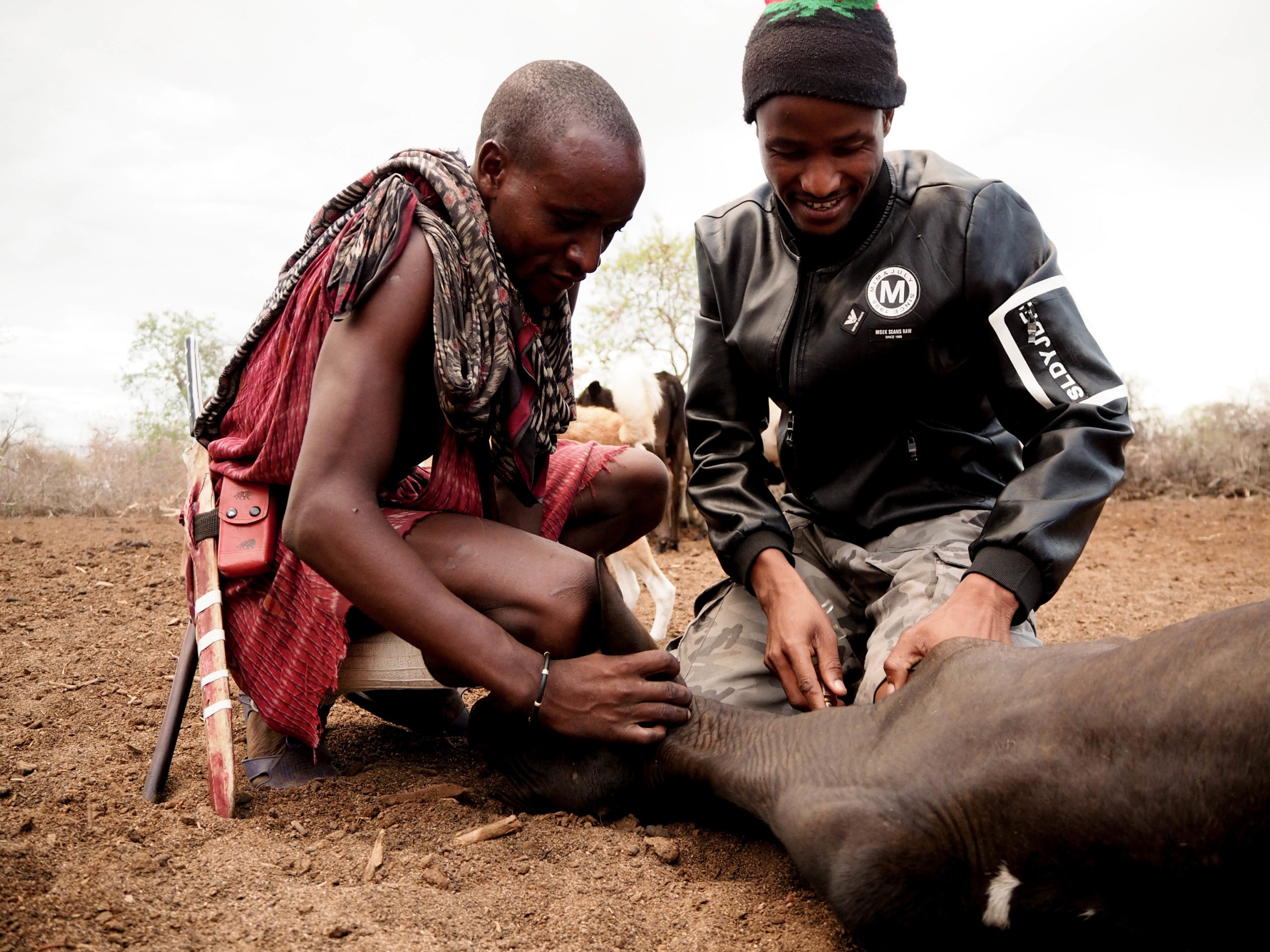
Ruaha Carnivore Project provides basic veterinary supplies to the largely nomadic community. Photo: Ray Foley.
One such person is Michael Kamara, a senior research assistant at RCP. He’s from Arusha, in northern Tanzania, and he’s keenly aware of the damage wild animals can present to livelihoods. When he was growing up, he says, elephants regularly destroyed his family’s crops. They were considered pests.
However, studying conservation in both Tanzania and the UK has changed his mind. Now he wants to influence others.
He says: “People are changing. And that is something which I can say that I am proud of myself to be part of the Ruaha Carnivore Project, because lion killings are decreasing.”
However, the conservation does not work unless everyone is on board. As Michael points out, “If you have 100 people, and one is against you, once he puts his poison in the carcass of a cow, for example, it will kill all the pride”.
“They understand why hunting lions isn’t good for them,” Benji says, as we begin our long, bumpy ride back to camp. “They understand the pressure that it puts on the community, the negativity that comes with it. It’s still very difficult because there are lions taking their livelihood by killing their livestock. But I think they’re seeing that bigger picture, whether it’s from tourism or from organisations like RCP and the benefits that we bring.
Specifics and statistics
Ruaha is a 20,000-square-kilometre area that is home to various nomadic peoples and an estimated 10% of all the lions in Africa.
The Ruaha Carnivore Project is funded by Oxford University. Since its establishment in 2009, the project’s funding has increased ten-fold.
Beginning with a team of three people working in one village, the project now employs more than 60 people working in 21 different villages, and in park and wildlife areas.
Of overall spending of $350,000 (USD) in 2015: 17% went on community initiatives, including a camera-trapping competition for villagers; 15% was spent on lion defenders; and 15% went on chain-link fence enclosures and guard dogs. The remainder was spent on research, outreach, overheads and travel.
Cian and photographer Ray Foley travelled to rural Tanzania with support from the Simon Cumbers Media Fund.
Interested in reading more about the state of Ireland’s community development sector? Check out our latest issue.

